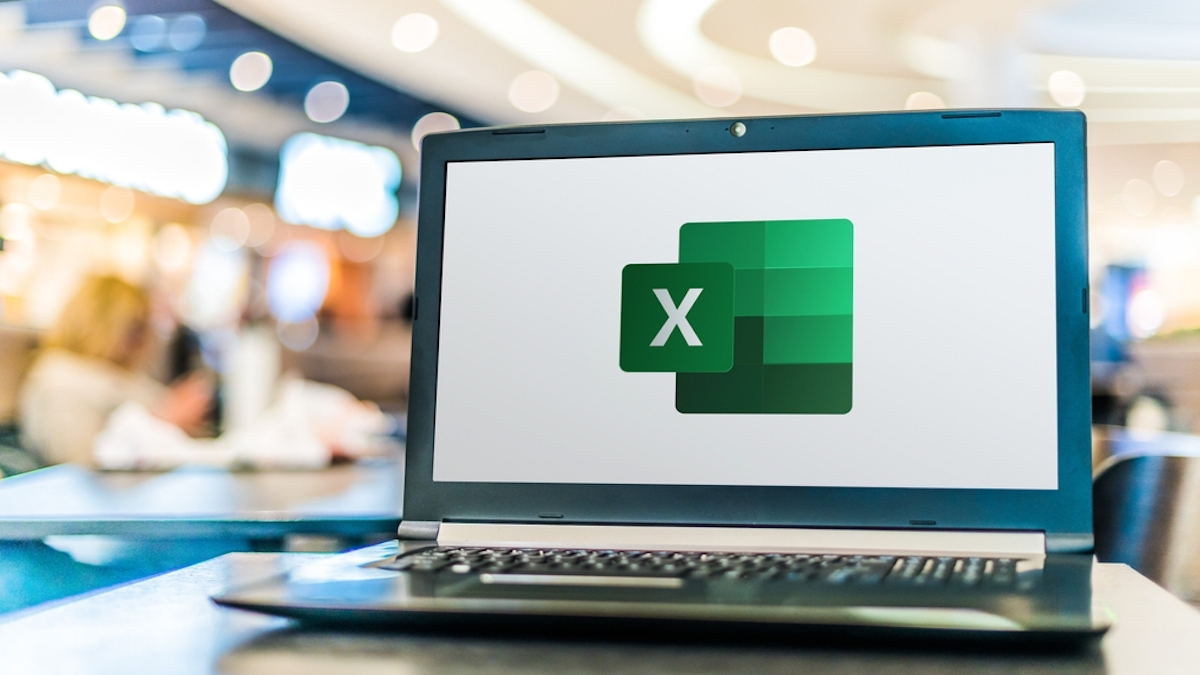
Your guide to macOS versions: From Sierra to Tahoe
Every year, Apple updates how Mac devices operate.
That’s dramatic—the changes aren’t always so big, but it is true. We get a new operating system for Mac devices once a year, and the next one is coming up.
Devices don’t age out that quickly, though. Physical devices aren’t typically considered obsolete until they’re at least seven years old, and many people keep them that long.
This means that there are up to seven years’ worth of operating system possibilities out there. And that becomes messy for developers and users alike.
Let’s take a look at all the different versions out there—what they are, how you can access them, and what you need to know about them for your device.
Did you know? Parallels Desktop is the only Microsoft-authorized solution that can run Windows—and run virtual macOS versions—in a virtual machine on your Mac device. See how it works for yourself with a 14-day free trial.
Key takeaways
- See how you can run all kinds of different macOS versions from Sierra to Tahoe
- Learn which versions are supported, aren’t supported, and won’t be supported soon
- Experience the nostalgia of the past decade of macOS releases
Here’s a look at the different macOS versions
Wait, why would you want to run different versions of macOS?
Well, you might need to test a new app with legacy software or test it with newer software from a device that wasn’t eligible for an upgrade.
You might have software or games that you still use and enjoy, but they don’t get along with newer versions of macOS.
Or you might just want to experience newer versions of macOS when a device upgrade isn’t quite in the cards for you yet.
That is to say, there’s any number of reasons why you might need to know about different macOS versions and how they work with Parallels Desktop.
So let’s get into it.
Quick clarification before we dive too far into all of this:
A host OS is the core operating system on your device. For example, if you have a Mac that currently runs Sequoia, then Sequoia is your host OS.
A guest OS is an operating system that runs on your device through a virtual machine (VM). If you’re using Parallels Desktop to run Windows on your Mac, then Windows is your guest OS.
| Version | Released | Supported by Apple? | Supported by Parallels Desktop? |
| Tahoe | 2025 (TBD) | Yes* | Yes; host and guest* |
| Sequoia | 2024 | Yes | Yes; host and guest |
| Sonoma | 2023 | Yes | Yes; host and guest |
| Ventura | 2022 | Yes** | Yes; host** and guest |
| Monterey | 2021 | No | Yes; guest only |
| Big Sur | 2020 | No | Yes; guest only, on Parallels Desktop 18 |
| Catalina | 2019 | No | Yes; guest only, on Parallels Desktop 18 |
| Mojave | 2018 | No | Yes; guest only, on Parallels Desktop 18 |
| High Sierra | 2017 | No | Yes; guest only, on Parallels Desktop 17 |
| Sierra | 2016 | No | Yes; guest only, on Parallels Desktop 17 |
*when released in fall 2025
**Apple support will likely discontinue with the release of macOS Tahoe
macOS Tahoe (2025)
Slotted for release this fall, macOS Tahoe has the appearance of a shiny new toy—but under the hood, it’s bigger than that. It’s a whole vibe shift, starting with the new Liquid Glass look and feel.
Along with more options for personalization and better multitasking, Tahoe promises Mac users improved AI functionality like live translation and text summaries.
If you want to get started with Tahoe (even before it rolls out to your device), you’re in luck.
We’re already making sure Parallels Desktop will support macOS Tahoe—and if you need to get ahead on testing on the new OS, you can read up on how to install Tahoe in a virtual machine on our knowledge base.
Does Apple support it today? Yes (well, starting in fall 2025, anyway)
Does Parallels Desktop support it? Yes, in version 26
macOS Sequoia (2024)
macOS Sequoia, famously the OS that brought us Apple Intelligence, iPhone mirroring, and a frame-rate rescue for Game Mode, is the reigning version of macOS.
Until fall, at least.
Naturally, Sequoia works with Parallels Desktop, both as the supporting OS so you can run Windows and as a guest OS if you need an alternate macOS instance.
Does Apple support it today? Yes
Does Parallels Desktop support it? Yes
macOS Sonoma (2023)
With the introduction of macOS Sonoma, we saw a major shift in the way people approached their Mac devices. Widgets, video conferencing improvements, and changes to the Messages app saw Mac devices channeling their inner iPhones.
It may have introduced new challenges, but functioning with Parallels Desktop wasn’t one of them. You can still run Sonoma with Parallels Desktop, both as a host and a guest OS, so it works side by side with Windows.
Does Apple support it today? Yes
Does Parallels Desktop support it? Yes
macOS Ventura (2022)
With its new virtual camera functionality that used iPhones as webcams, a Stage Manager feature that could help users manage their many open windows, and extra content-making goodies, macOS Ventura was an operating system made with creators in mind.
Though it’s likely nearing the end of its run as an Apple-supported OS, Ventura does and will continue to work well with Parallels Desktop. You can always catch up on updates and changes with our knowledge base, as well.
Does Apple support it today? Yes—but support will likely end when Tahoe is released to the general public.
Does Parallels Desktop support it? Yes
macOS Monterey (2021)
In 2021, macOS Monterey brought us universal control for Macs and iPads, a new AirPlay connection for Macs, and features for shared experiences, no doubt inspired by the isolation many were still going through.
Though it doesn’t receive security updates from Apple anymore, you can still run macOS Monterey through a Parallels Desktop virtual machine. This way, you can still run any Monterey-specific software or apps, even if you’re running a newer macOS.
Does Apple support it today? No
Does Parallels Desktop support it? Yes
macOS Big Sur (2020)
Touted as a major visual redesign for macOS, Big Sur was the step before Tahoe’s Liquid Glass. It brought us translucent sidebars, customizable start pages for Safari, and little features in the new Control Center designed to speed up repetitive tasks.
It isn’t supported by Apple nowadays, but it still works with Parallels Desktop 18—so you can still work with it if you have an older version of Parallels Desktop.
Does Apple support it today? No
Does Parallels Desktop support it? Yes, in Parallels Desktop 18
macOS Catalina (2019)
macOS Catalina brought us a major change from iTunes to dedicated apps for music, podcasts, and TV, along with tools from iOS for managing screen time and device use.
You won’t see any security updates from Apple for it, but you can still use it in a virtual machine with Parallels Desktop 18 if you have apps that need it.
Does Apple support it today? No
Does Parallels Desktop support it? Yes, in Parallels Desktop 18
macOS Mojave (2018)
With macOS Mojave, we discovered the joy of a system-wide Dark Mode, dynamic elements that could match wallpapers with the time of day, new methods for organizing files on desktops, and the introduction of iOS apps like News and Stocks.
Though it doesn’t get Apple’s security updates these days, you can still use Mojave with Parallels Desktop 18 in a virtual machine.
Does Apple support it today? No
Does Parallels Desktop support it? Yes, in Parallels Desktop 18
macOS High Sierra (2017)
In 2017, macOS High Sierra introduced us to a new file organization system optimized for solid-state drives, which is still the foundation for Mac file systems today. It also explored the possibilities of VR content creation and new methods for video management.
It won’t see updates from Apple anytime soon, but macOS High Sierra still works in Parallels Desktop 17 through a virtual machine—so you can use it side by side with your more recent version of macOS.
Does Apple support it today? No
Does Parallels Desktop support it? Yes, in Parallels Desktop 17
macOS Sierra (2016)
With macOS Sierra, we got Siri’s debut on Mac devices, so users could control their computers with voice commands. It also introduced features like shared clipboards, unlocking functions that could cross over devices, and Apple Pay.
Though it’s been retired by Apple, macOS Sierra still works in Parallels Desktop 17 through a virtual machine. If you have any apps that still need Sierra, you can access it that way.
Does Apple support it today? No
Does Parallels Desktop support it? Yes, in Parallels Desktop 17
Can I run macOS versions in a virtual machine?
We talk a lot about Parallels Desktop helping you run Windows on a Mac device, but there’s so much more it can do. It can also help you run macOS in a VM—including other instances or versions.
Here’s how to run another instance of macOS on your Mac device:
1. Install Parallels Desktop on your Mac
You can grab a copy of Parallels Desktop from the official site here.
2. Use Parallels Desktop to open a new VM
In Parallels Desktop, use File > New or the + button to open a new virtual machine.
3. Install your macOS version on your VM
You can install the same version of macOS as your device using the Free Systems menu (more details on how to do that in our knowledge base).
You can also install other versions of macOS on your device using the Install Windows, Linux, or macOS from an Image File option.
4. Configure your VM
In your virtual machine’s settings, you can adjust settings and resources like RAM, CPU, and storage to improve performance.
Which version of macOS can run in Parallels Desktop as a virtual machine?
All the macOS versions listed in this article can work as guest OSs in a virtual machine through Parallels Desktop. That said, there are a few contingencies, and other versions of macOS may also be supported by earlier versions of Parallels Desktop.
You can find a full breakdown of which versions of macOS work in Parallels Desktop in our knowledge base here.
The short version, though, is here:
- Sequoia works as a virtual machine in Parallels Desktop 19 and 20
- Monterey, Ventura, and Sonoma work as virtual machines in Parallels Desktop 18, 19, and 20
- High Sierra, Mojave, Catalina, and Big Sur work as virtual machines in Parallels Desktop 15, 16, and 17
- Sierra works as a virtual machine in Parallels Desktop 15 or earlier
Does it matter if I have an Intel Mac or a Mac with Apple silicon?
There will also be some differences depending on whether your Mac is Intel or silicon.
Intel Macs can support virtual machines running older versions of macOS, including High Sierra, and Mojave up to Sonoma. This makes them useful for developers or testers who need to work with legacy software.
Silicon Macs can only support virtual machines running macOS Monterey or newer due to hardware and licensing limitations.
What macOS versions are no longer supported by Apple?
Apple typically only supports three years’ worth of releases with security updates, bug fixes, and service support. This means that currently, Monterey and earlier versions of macOS don’t receive these sorts of updates from Apple.
It’s likely that with the upcoming Tahoe release, macOS Ventura will join their ranks.
Ready to explore the world of macOS versions?
Whether you’re looking to run alternate versions of macOS on your device for testing purposes, to play your favorite games, or even want access to Windows, Parallels Desktop can help—even if you have an older Mac!
Get started with a 14-day free trial today and experience the vast variety of operating systems at your fingertips—macOS and Windows alike.










